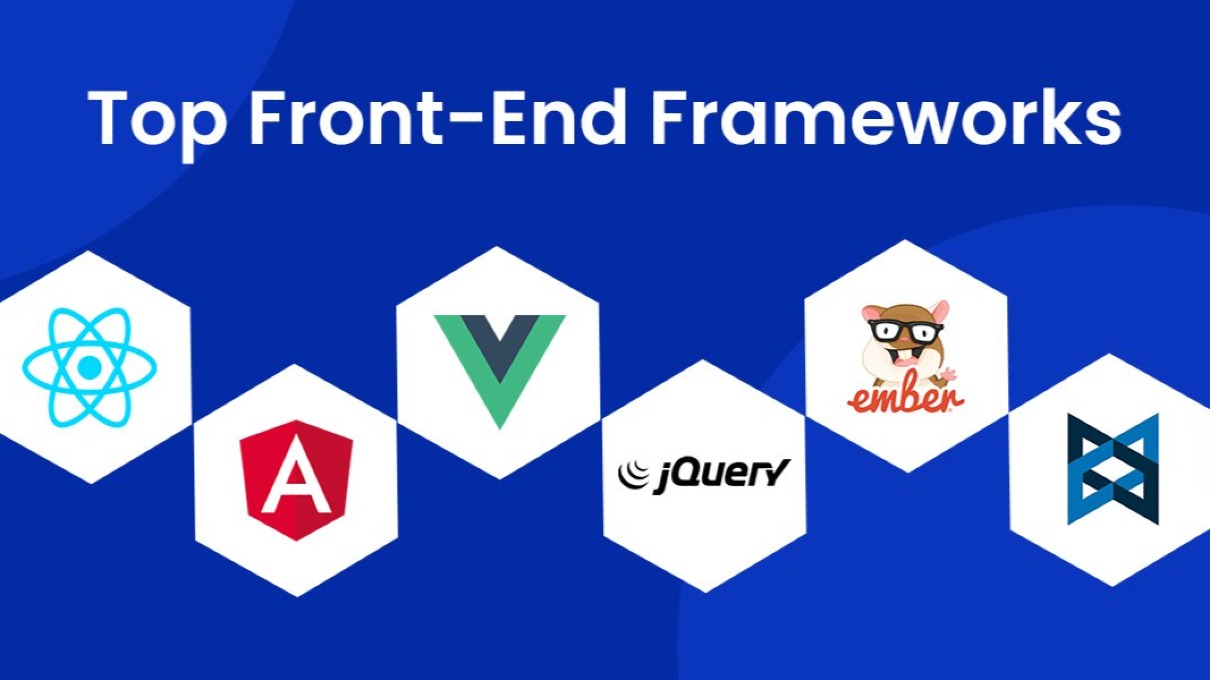Frontend development is an ever-evolving space, with developers spoilt for choice when it comes to frameworks. Among the top contenders are Vue.js and React.js, both of which have carved out loyal followings. But how do they compare? And how do other frameworks like Angular, Svelte, and Ember.js stack up? Let’s take a closer look to help you choose the best tool for your next project.
Vue.js: The Progressive Framework
Vue.js, often described as a “progressive framework,” is designed for flexibility and ease of integration.
Key Features
- Component-Based Architecture: Encourages modular, reusable UI components.
- Virtual DOM: Efficiently updates the actual DOM, boosting performance.
- Gentle Learning Curve: Ideal for beginners, making it easier to pick up than some competitors.
Advantages
- Flexibility: Can be integrated gradually into projects or scaled for large applications.
- High Performance: The virtual DOM ensures snappy updates and smooth performance.
- Strong Community Support: Extensive documentation and resources foster rapid learning.
When to Choose Vue.js
Vue.js is perfect for small to medium projects or when a gentle learning curve is a priority. Its simplicity, combined with power, makes it a popular choice for startups and agile teams.
React.js: The Dominant Force
React.js, created by Facebook, has become a dominant player in frontend development.
Key Features
- Component-Based Architecture: Like Vue.js, it promotes reusable components.
- Virtual DOM: Ensures optimal rendering and performance.
- JSX: A syntax extension that allows you to write HTML-like structures within JavaScript, making development more intuitive.
Advantages
- Large Community and Ecosystem: React boasts a vast array of libraries, tools, and resources.
- Performance: Efficient rendering techniques ensure applications run smoothly.
- Versatility: Suitable for everything from small websites to large-scale applications.
When to Choose React.js
React.js is a solid choice for developers who value its extensive ecosystem and modularity. It’s particularly well-suited for complex web apps or projects requiring a lot of customization.
Other Notable Frameworks
While Vue.js and React.js dominate the landscape, other frameworks bring unique strengths to the table:
Angular
A comprehensive framework backed by Google, Angular offers:
- Dependency Injection: Simplifies data sharing between components.
- Strong CLI: Streamlines project setup and development.
- Ideal Use Case: Large-scale, enterprise-level applications that require structure.
Svelte
A newer framework that compiles components into optimized JavaScript at build time, reducing runtime overhead.
- Advantages: Minimal runtime cost and improved performance.
- Ideal Use Case: Projects prioritizing speed and simplicity.
Ember.js
Known for its convention-over-configuration philosophy, Ember.js emphasizes productivity.
- Advantages: Built-in tools for routing, data management, and testing.
- Ideal Use Case: Complex applications where consistency and reliability are key.
How to Choose the Right Framework
Selecting the right framework depends on your project’s needs and your team’s expertise. Here are key considerations:
1. Project Size and Complexity
- Small/Medium Projects: Vue.js or React.js for flexibility and ease of use.
- Large Applications: Angular or Ember.js for structured, scalable solutions.
2. Team Skillset
- Familiar with JavaScript/HTML: Vue.js is beginner-friendly.
- Experienced Developers: React.js offers deeper customization opportunities.
3. Performance Requirements
- Standard Applications: Vue.js and React.js deliver excellent performance.
- High-Demand Applications: Svelte is ideal for reducing runtime overhead.
4. Long-Term Viability
- Community Support: Frameworks like React.js have extensive libraries and regular updates.
- Active Development: Tools with robust ecosystems, like Angular, ensure sustainability.
Conclusion
Choosing a frontend framework is about finding the right fit for your project’s scale, team expertise, and goals. Vue.js shines for its simplicity and flexibility, while React.js excels in versatility and ecosystem support. For more structured enterprise-level solutions, frameworks like Angular and Ember.js are worth considering. And for cutting-edge performance, Svelte is a strong contender.
Whichever framework you choose, staying aligned with your project’s needs and the latest trends in frontend development will set you up for success.



